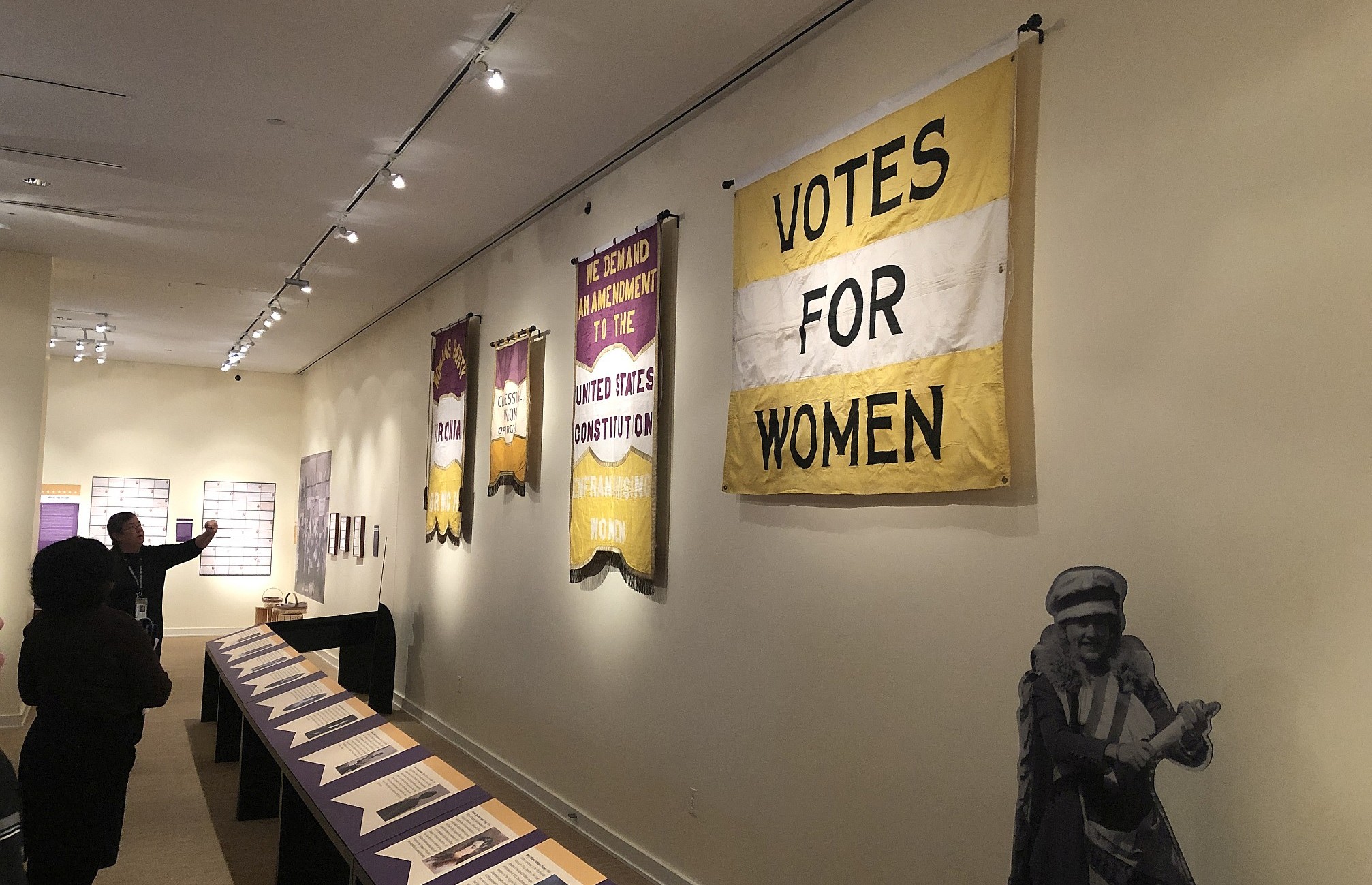T he Library of Virginia’s exhibition We Demand: Women’s Suffrage in Virginia is now open. This year marks the centennial of the ratification of the 19th Amendment to the U.S. Constitution guaranteeing women’s right to vote. Although the right to vote is often taken for granted, universal suffrage did not become a reality in the United States until the 20th century, and work continues in the 21st century to ensure equal access to the ballot by all citizens. The story of Virginia’s suffragists and their contributions to the long fight for women’s voting rights is little known.


Suffragists wore buttons, pins, jewelry, sashes, and hat ribbons to show their support for voting rights. Equal Suffrage League of Virginia Records, Accession 22002, Library of Virginia.
White and African American women who advocated for labor, educational, public health and other reforms recognized that the right to vote would increase their effectiveness in the state legislature and in Congress. Suffragists also believed that as citizens, women had the same natural right to vote as men. Anti-suffragists argued that women had the power to influence policy indirectly and that voting would lead to the breakdown of the family and society. In Virginia, opponents of woman suffrage also argued that it would lead to the end of white supremacy if African American women could vote, while white suffragists countered that Virginia’s constitution would disfranchise African American women as effectively as it had disfranchised African American men. We Demand tells the complicated stories of Virginia’s suffrage activists and how they fought to achieve their goals.
Virginia suffragists were a remarkable group of talented and dedicated women who have largely been forgotten. They were artists and writers, business and professional women, and educators and reformers who marched in parades, rallied at the Virginia State Capitol, spoke to crowds on street corners, staffed booths at state and county fairs, lobbied legislators and congressmen, protested at the White House, and even went to jail. At the centenary of woman suffrage, these remarkable women are at last recognized for their important achievements and contributions to Virginia’s history.
– Mari Julienne, Brent Tarter, and Barbara Batson, exhibition curators

Ephemera, Equal Suffrage League of Virginia Records, 1909-1935. Archives Accession 2202, Library of Virginia.
We Demand is on view at the Library of Virginia through 5 December 2020, Monday through Saturday from 9:00 A.M. to 5:00 P.M. The Library’s accompanying book, The Campaign for Woman Suffrage, will be available for purchase at The Virginia Shop in March 2020.
A traveling exhibition will be on view at local libraries and historical societies around the state beginning in March 2020. See the schedule here.
This exhibition is a project of the Task Force to Commemorate the Centennial Anniversary of Women’s Right to Vote.






